Huelva is one of several cities that belong to the so-called Christopher Columbus’ Trail, there are many references to this explorer. Beautiful monuments and the sea climate add charm to tourism.
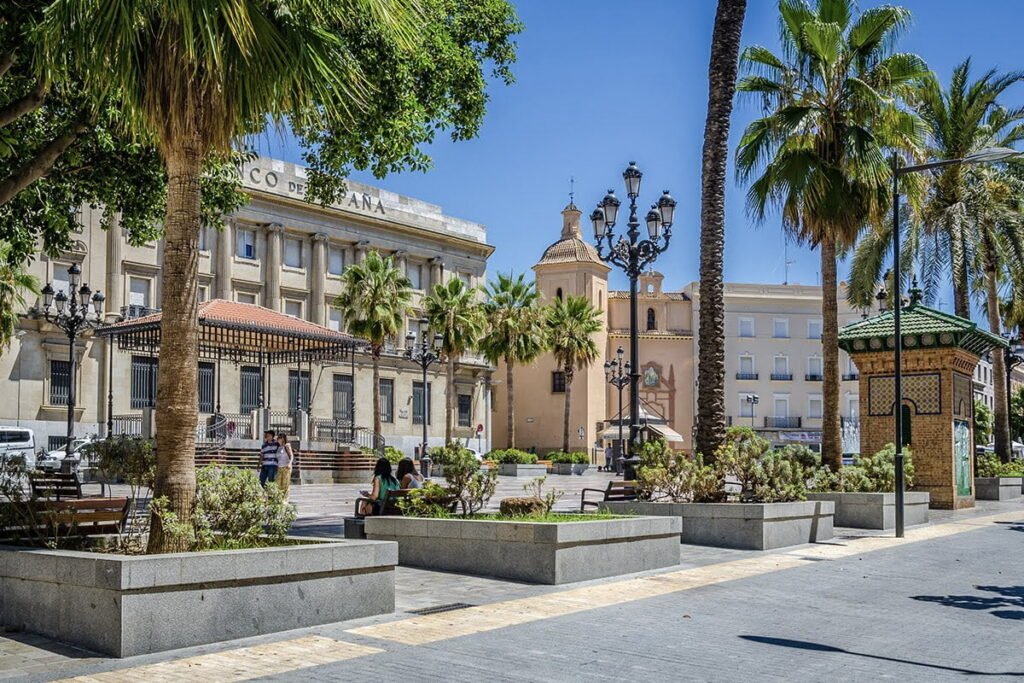
Huelva is a city in southwestern Spain, in the Andalusia region. The city is the capital of the province of Huelva, located at the mouth of the Tinto River in the Atlantic
Attractions
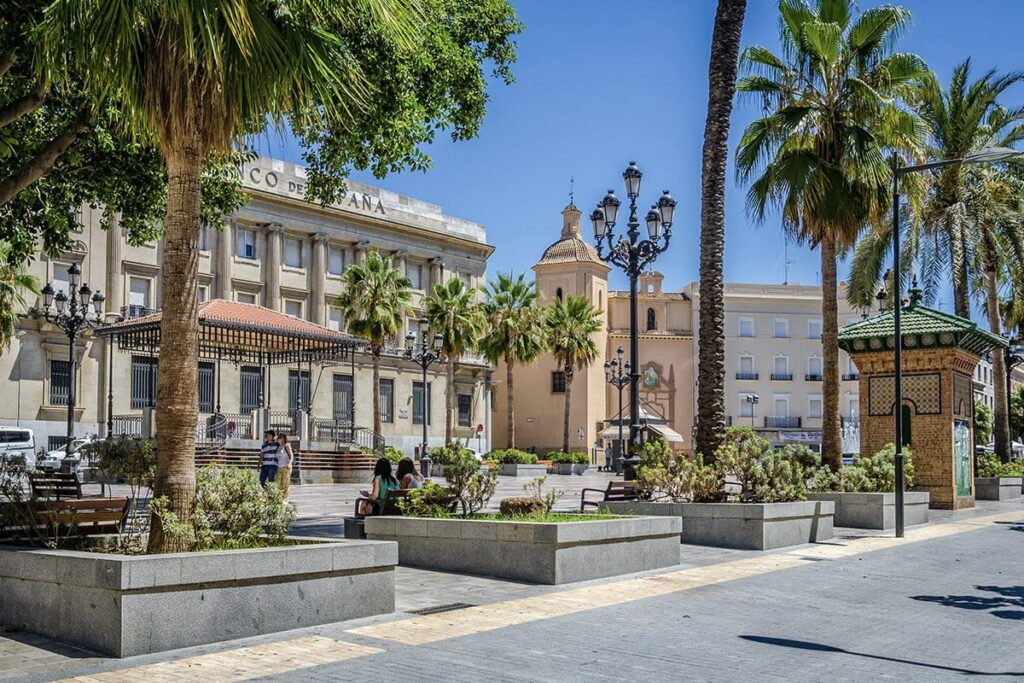
Plaza de las Monjas
Plaza de las Monjas This small but very charming square surrounded by palm trees is the center of the Old Town of Huelva. In its surroundings you will find plenty of cafes, ice cream parlors, bars and restaurants where you can discover the flavors of local cuisine.
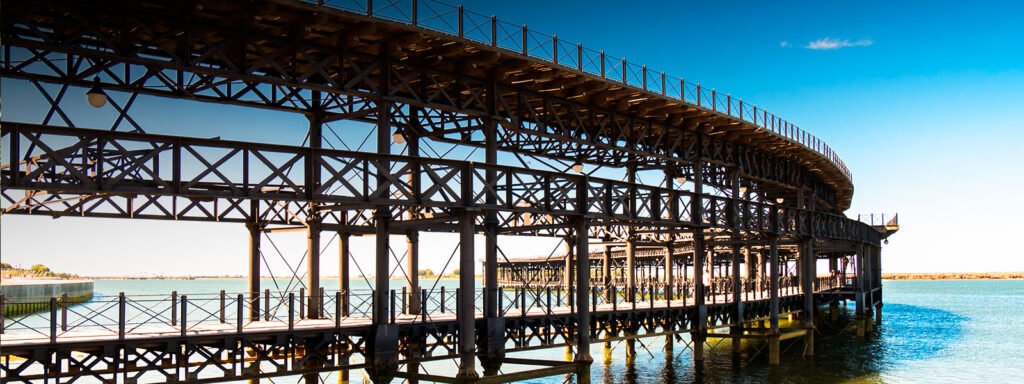
Muelle de Riotinto

Muelle de Riotinto
It is definitely worth seeing the pier, which has an unusual appearance, as it was once used for quick reloading of ore from railway wagons straight to ships. This is one of the symbols of Huelva as an industrial city. It is located on the southern edge of the city, on the Odiel River. You can come here at any time, the pier is not guarded, so entry is free. The promenade has three levels, the lowest and the longest leading to the river, parallel to the banks. The upper two floors are accessible via a steep staircase. From the top there is a beautiful panorama of the city, the river and its second river, and the promenade stretching all the way to the Columbus Monument.
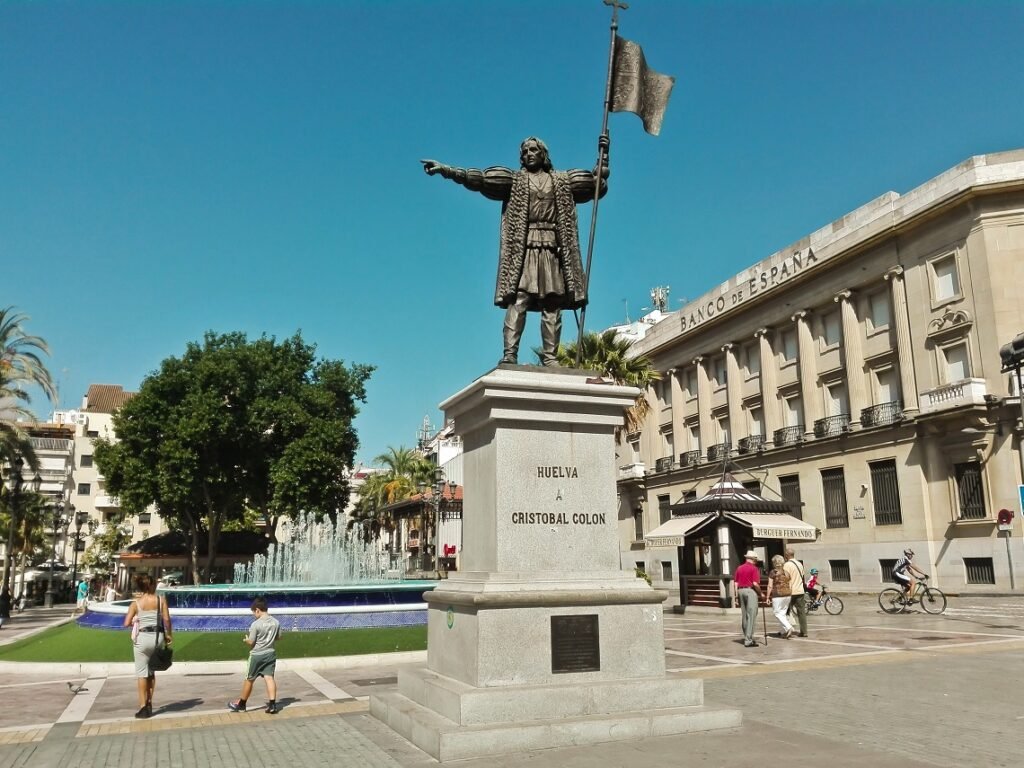
Estatua de Cristóbal Colón Huvela
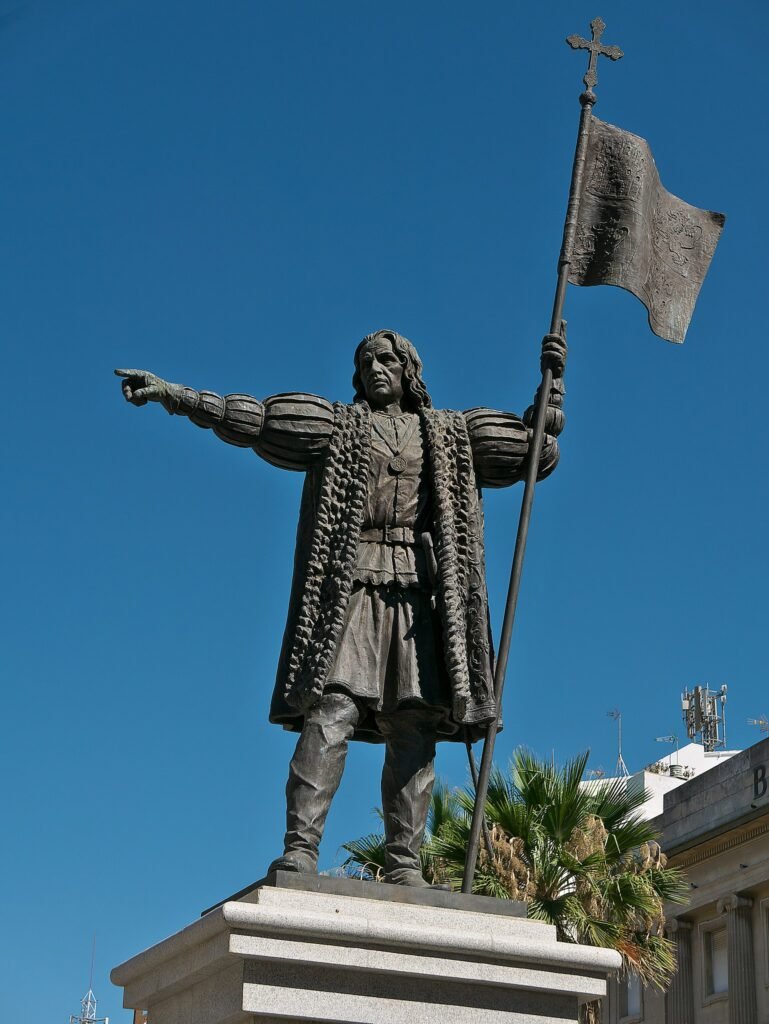
Estatua de Cristóbal Colón Huvela
Another symbol of the city of Huelva is the Columbus monument – Monumento a la Fe Descubridora. Often depicted on postcards and guidebook covers, it is a very characteristic statue of this region. Funded as part of the Columbus Memorial Fund Inc. subscription, popular in the United States. The 37-meter-high monument was erected in 1927–1929. It was built on Punta del Sebo, at the confluence of the Tinto and Odiel rivers, and was inaugurated on April 21, 1929.

Columbus House

Columbus House
CASA COLÓN – (Columbus House): The “Casa Colón” (Columbus House), a symbol of British power, was opened as the Gran Hotel Colón in 1883, ready to celebrate the 400th anniversary of the discovery of America in 1892. At the end of the 19th century, Huelva was keen to create a suitably luxurious hotel that could welcome growing number of foreign guests interested in investing in the mining industry, which is why the Huelva Hotel Company was born in 1881. Architect José Pérez Santamaría was commissioned to design the building. Unfortunately it was not successful as a hotel. Past Company who used it for offices and housing their mining management staff.
In 1992, the building was refurbished as part of the 500th anniversary celebrations, and the former northern section was replaced by a modern exhibition and conference centre, the site of the major Latin American Film Festival in November.
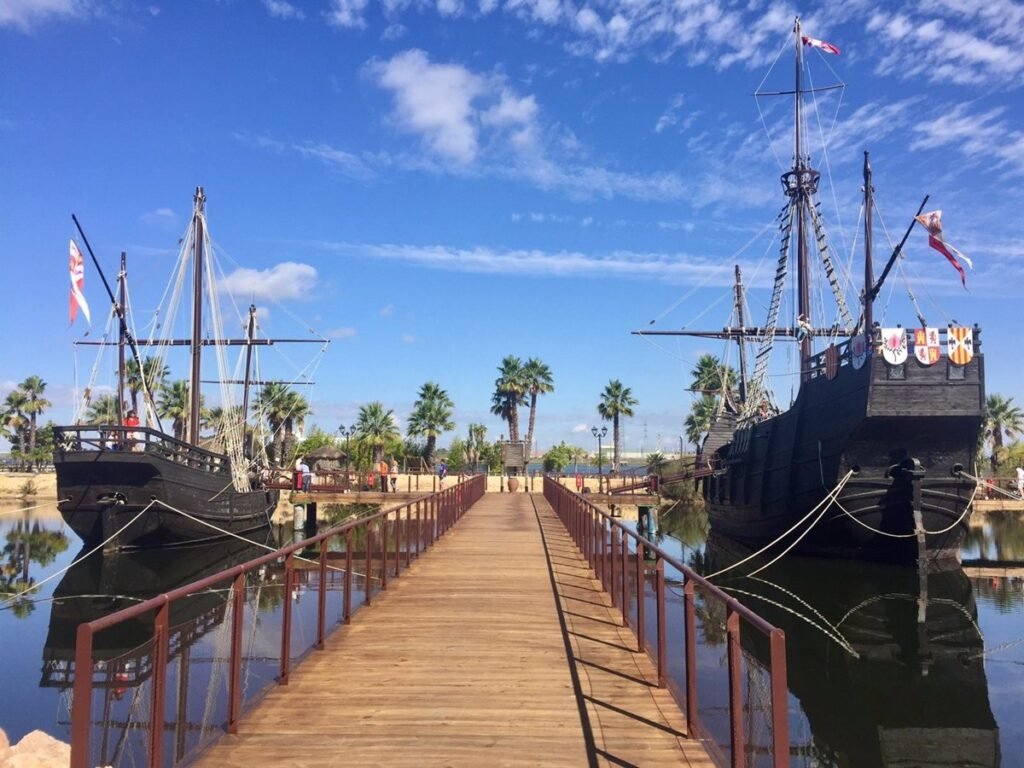
Muelle de las Carabelas
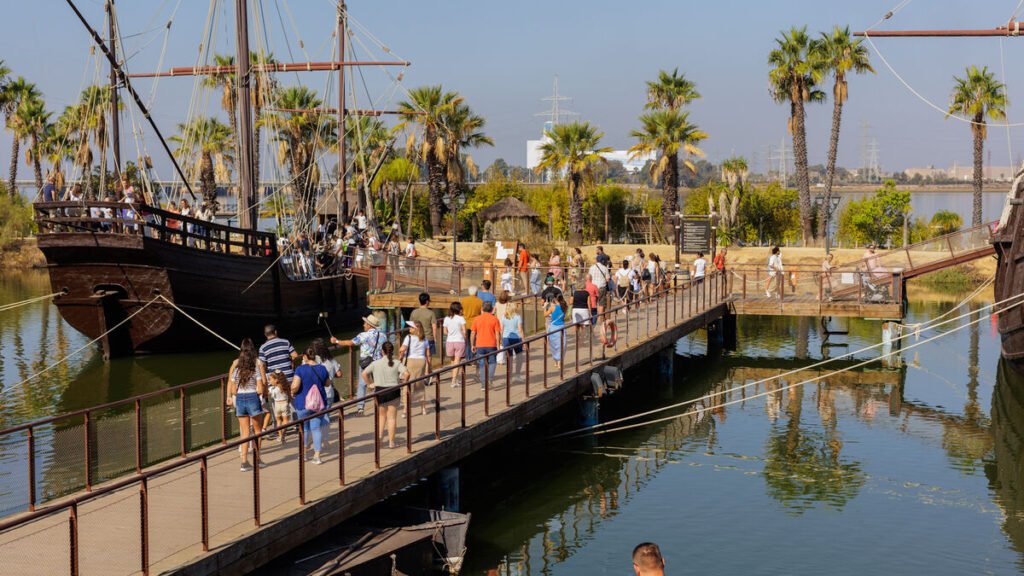
Muelle de las Carabelas
You must visit the Museum with replicas of Christopher Columbus’s ships in the port of Palos de la Frontera, from which Columbus sailed on his first expedition to the New World.
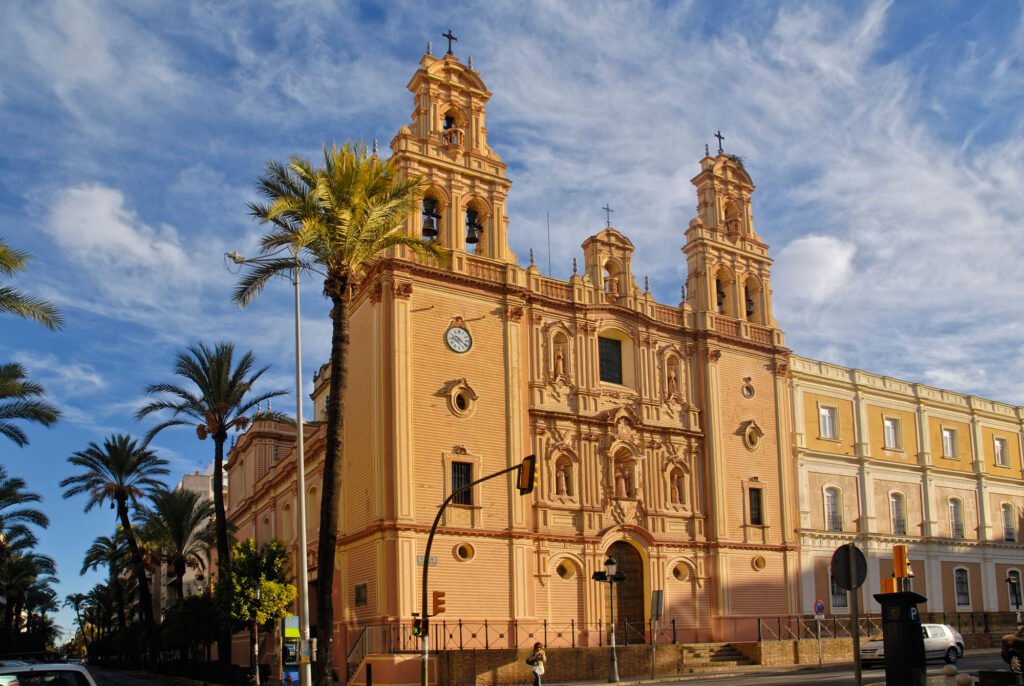
Santa Iglesia Catedral de la Merced

Santa Iglesia Catedral de la Merced
Inscribed on the list of monuments of artistic heritage in 1970, the Catedral de Nuestra Señora de la Merced, or Huelva Cathedral, is one of the most important tourist sites in the city of Huelva. The cathedral has three naves and although it is not the largest or most spectacular religious building you will ever visit, it does have a long history and rich heritage that is worth exploring. It was once part of the Mercedarian Monastery, which in turn was built on the ancient Hermitage of San Roque.
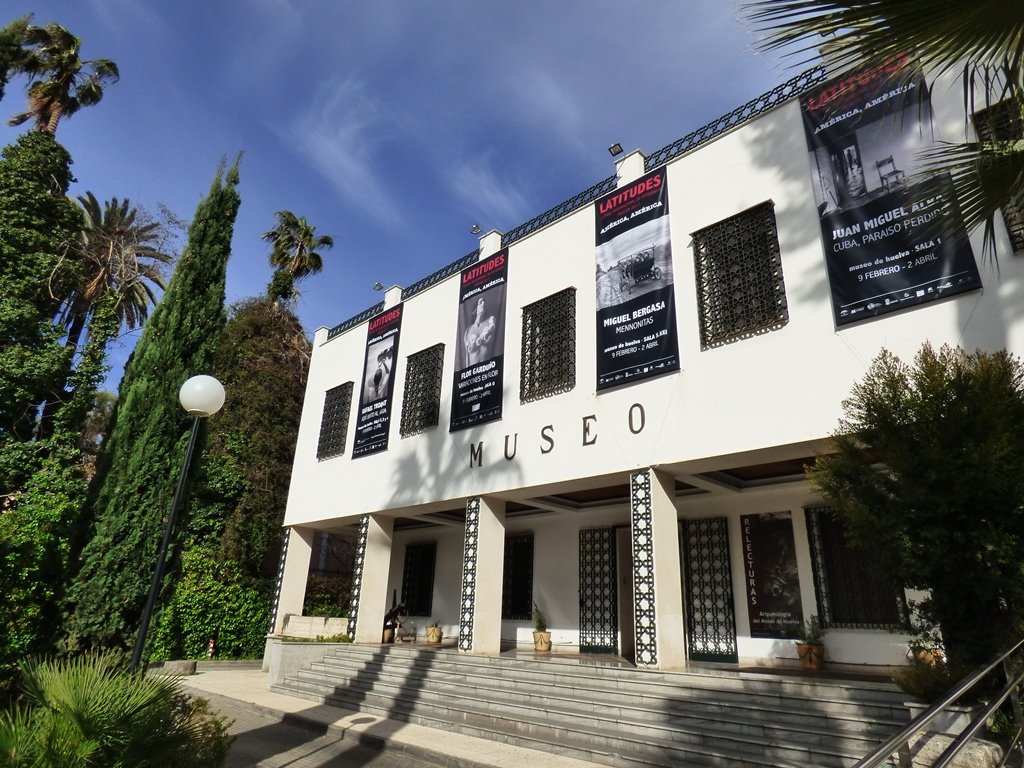
Museo de Huelva
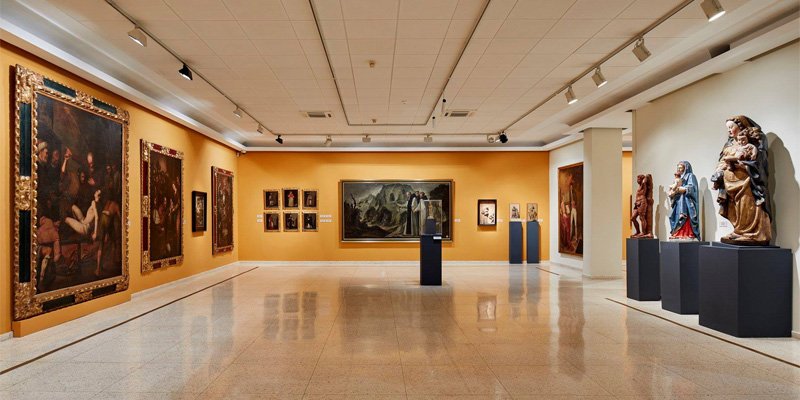
Museo de Huelva
The Museum of Huelva is located on Alameda Sundheim, one of the most emblematic avenues of the city, configured as a winter promenade and residence of the upper bourgeoisie in the first decades of the 20th century. The Museum was inaugurated in 1973, providing the city with a cultural space where archaeological finds from the Huelva territory from the prehistoric era to the latest artistic manifestations in the 20th century are shown.

Beaches

Punta Umbría Beach
Punta Umbria Beach – This wide city beach has the largest offer of services in this part of Huelva. This former British spa is family-friendly and offers a range of facilities, including beach bars and water sports such as windsurfing. It is easily accessible and has various parking spaces.
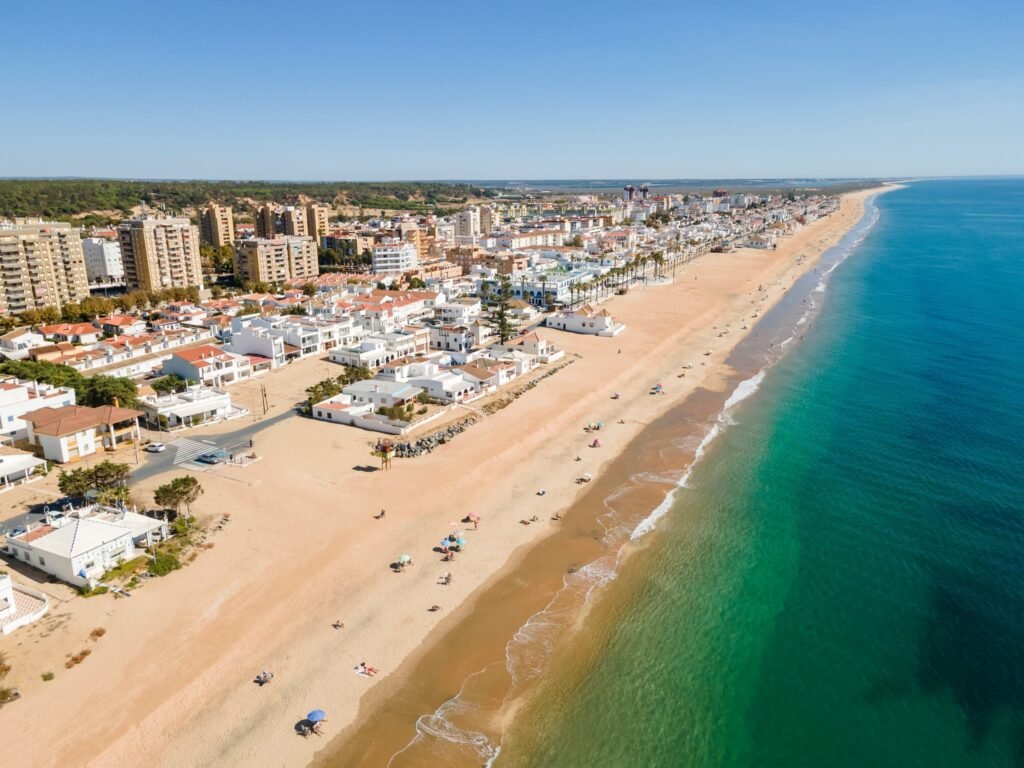
Playa de Islantilla
Istantilla beach- It is a city beach 1,400 meters long and 60 meters wide. The beach is characterized by golden sand and moderate waves, where you can collect a wonderful collection of shells. The beach is a paradise for sunbathers. Despite its meian location, there is no vegetation nearby, retaining its naturalness. Tourists have access to bathrooms. The beach is adapted for people with reduced mobility, and in the summer season there are two sailing schools and marine recreation services. There are two bar terraces on the promenade, which are not oriented towards typical chiringuito restaurants.
Shopping
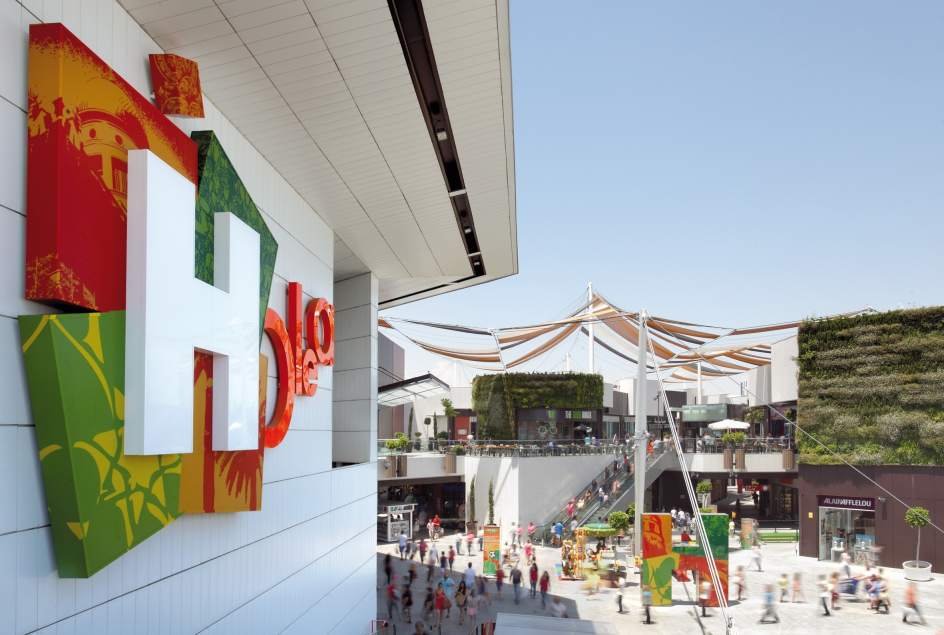
If you want to go shopping in this western part of Andalusia, I recommend the Hoela Shopping and Entertainment Center. Here you will find Carrefour, H&M, Primark, Toys R Us, Claire’s Accessories, Sport Zone and Adidas, etc. There is also entertainment for cinema lovers – a 4D cinema, as well as a food zone with Burger King, etc. There are about 100 well-known stores waiting for shoppers here, so You will definitely find something for yourself here that you know and like.
Festival

Fiestas Colombinas

Fiestas Colombinas
The Colombian Festivals are a set of annual celebrations in the city of Huelva in Andalusia, commemorating the first voyage of Christopher Columbus. This event, closely related to the Discovery of America, commemorates the departure of Christopher Columbus’s caravel in 1492 towards the New World. Ibero-American culture is reflected in these popular celebrations, in various dance festivals. There are also bullfights in Plaza de La Merced.
Interesting facts about Huelva:
- Founded in 1889, Recreativo de Huelva football club is the oldest football club in Spain,
- the inhabitants of the city of Huelva are called Onubenses,
- near Huelva (Niebla) you will find an interesting castle: Castillo de Niebla, – also visit the nearby town of Aracena, where the Gruta de las Maravillas cave awaits you, the province of Huelva is also known for grazing Iberian pigs, the meat of which is used to produce one of the varieties of Iberian ham called jamón de Huelva.

